#the nine muses
Photo

A Manual of Etiquette with Hints on Politeness and Good Breeding, 1868
#1868#1860s#victorian era#superstitions#etiquette#advice#manners#superstition#victorian#1860's#dinner#dinner party#high society#upper class#number 13#thirteen#the muses#the graces#the three graces#the nine muses
2K notes
·
View notes
Text
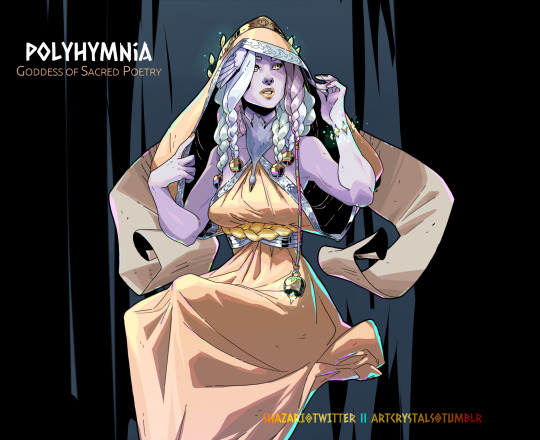
The Nine Muses
Polyhymnia, Goddess of Sacred Poetry
(fan design, ofc)
2K notes
·
View notes
Text



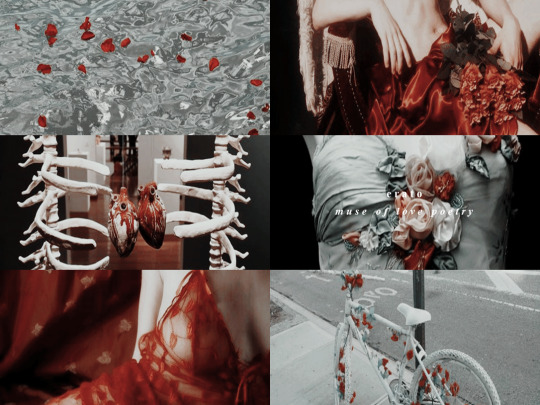




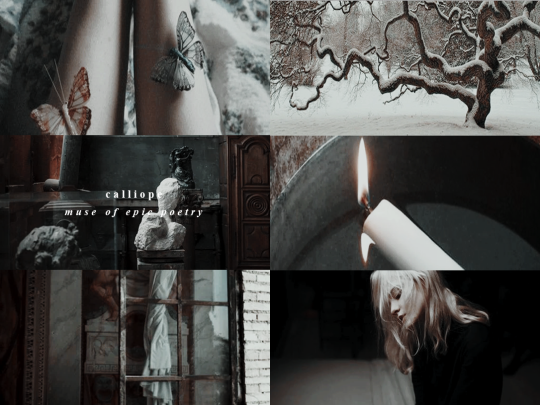
myth: the nine muses
in ancient greek religion and mythology, the muses are the inspirational goddesses of literature, science, and the arts. they were considered the source of the knowledge embodied in the poetry, lyric songs, and myths that were related orally for centuries in ancient greek culture.
#the nine muses#urania#calliope#erato#mythedot#terpsichore#euterpe#melpomene#polyhymnia#thalia#clio#greek mythology#mine#*#myth*
287 notes
·
View notes
Text
⋆.˚ ᡣ𐭩 .𖥔˚ The Nine Muses ⋆.˚ ᡣ𐭩 .𖥔˚
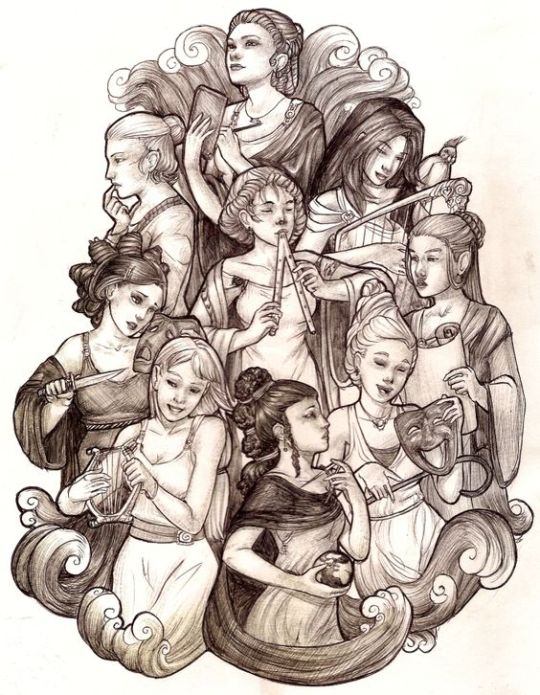
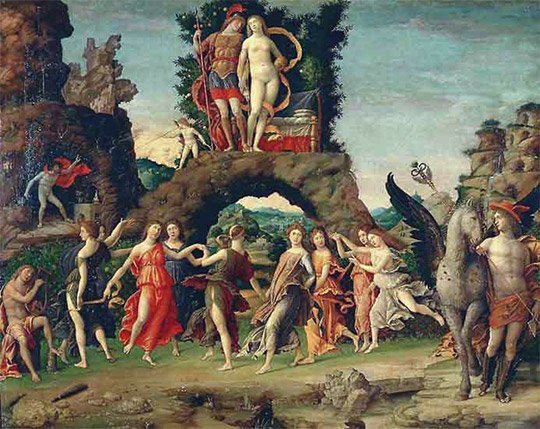
In Greek mythology, there is a group of nine goddesses called the muses. They are responsible for inspiring artists, poets, and writers. The word muse comes from the Greek word "mosis", which means wish or desire. The word museum also comes from the word "muses".
The myth of their creation is that Zeus (disguising himself as a Sheppard), slept with Mnemosyne for nine nights in a row, producing nine sisters. Mnemosyne gave her daughters to Eufime and Apollo, who raised them with a great fondness of the arts.
The nine muses were:
Clio - Created the study of history and guitar. She was a goddess of creativity. Her role was mostly to attend political meetings. In ancient Greece, history was called "clio" or "kleos". Often depicted with a book. She was also the goddess of memory.
Euterpe - Created many types of musical instruments, is often depicted playing a flute, while being surrounded by several other instruments. She is also usually associated with drums, violin, and guitar. The flute is her specialty.
Thalia - She discovered comedy and humor, which she was also protector of. Also discovered geometry and agriculture. She was depicted holding a comedy mask. She is a joyful young woman, almost always laughing.
Melpomene - She was the creator and protector of tragedy (opposite of Thalia). She was depicted with a tragedy mask and bearing a bat. She is the Greek goddess of theatre, along with Thalia. She is the mother of mermaids. She is know to have anything a woman could desire, except happiness.
Terpsichore - She is the muse of poetry and dancing. She is also known as the mother of sirens. She was the protector of dancing and loved music. Invented the harp. Also invented education. She loves having fun and being happy. She is depicted as a young woman wearing laurels on her head, with a harp, or dancing.
Erato - Protector of love, love poetry, and also marriage and weddings. Her name comes from "Eros" which is the feeling of falling in love. She is depicted with a lyre and love arrows + bow. She is associated with roses, myrtle, and turtle doves.
Polymnia - Protector of divine hymns and mimic art. Invent geometry and grammar. She is often in meditation or a pensive state. Depicted looking to the sky holding a lyre. She created harmony as well. She is associated with the colour white.
Urania - Protector of celestial objects. Such as stars and planets. She invented astronomy. She is depicted bearing stars, a celestial sphere, and a bow compass. The planet was named after her as well as the Greek god.
Calliope - She was the oldest and most superior muse. Her role was so accompany kings to serve justice and peace. Protector of heroic poems. She is depicted holding laurels or a trumpet in one hand and Homeric poems in the other hand. She is also ruler of epic poetry. She taught Achilles how to sing and is known for her beautiful voice.
The nine muses have been inspiring artists for centuries.
αποχαιρετισμός! ♡

17 notes
·
View notes
Note
6 for calliope for the mary oliver prompts?
Hi, thanks so much for the ask!! This pairing of prompt and character…absolutely INSPIRED. *chef’s kiss*
This fic owes a special shout-out to @historynut101, whose story “fragments” I consider to be an absolutely superlative work of Sandman fanfiction. It is a keenly-written, heart-shattering exploration of Calliope and her sisters and how they’re all connected to each other, and I can’t recommend it highly enough.
(In Sandman canon, Calliope is the youngest of the Muses. There are doubtless some versions of the myths where that’s true, but I’m much more accustomed to the versions where she is the eldest. So that’s what I’m going with for this ficlet.)
6. “But if I sing, I sing from her.”
Calliope was their oldest sister, and she was a part of them all.
The Muses could not have been who they were without her guiding hand. It was her song that first rang out from the slopes of Mount Helicon. It was she, this chief goddess with her graceful head and proud chin, who taught each of her younger sisters in turn how to sing, how to meld their voices into a glorious whole.
For a long, long time after their sister was stolen from them, the Muses did not sing. They could only scream.
They were ripped asunder, nine into eight, blood seeping into the waters of their sacred spring. A tragedy—should Melpomene have known what to do, then? Should have known how to put the sisters’ hearts back together, assure them that this wretched pain would have its place, that some catharsis would be served?
When Melpomene had imagined this situation—and it had crossed her mind, of course it had, the laws about how the sisters could be bound always a spectre clinging to her back—she believed she might be able to react with composure. With the sober yet sensible attitude one might expect from someone who spent her days with her hands wrist-deep in stories of pain.
She had been so very wrong. Even goddesses were not immune to small pockets of naïveté.
The first time the remaining sisters tried to sing, it was nothing short of a disaster. They could not find their once-dazzling harmonies without Calliope’s grounding melody. One by one their voices faltered and fell silent. Polymnia bit her lip until she drew blood, and poor Terpsichore buried her face in her hands.
It was Clio who rallied them. She knew, more than any of her sisters, how to draw meaning from what was no longer present.
She walked among her sisters—touching a shoulder, stroking a tumbled head of hair. Softly, she told them, “Let us begin again. She would want us to sing.”
Erato’s bitter laugh sliced the air. “What does it matter, sister? Calliope is gone.”
“No.” Steel crept into Clio’s tone. “As long as we have breath, Calliope will be here.”
They could not forget this. Calliope was their oldest sister, and she was a part of them all.
#the sandman netflix#the sandman#calliope the sandman#asks#prompt fills#the-everqueen#the nine muses
11 notes
·
View notes
Text

Parnassus (also known as Mars and Venus, 1497 - Andrea Mantegna (1431–1506)
The Parnassus was the first picture painted by Mantegna for Isabella d'Este's studiolo (cabinet) in the Ducal Palace of Mantua. The shipping of the paint used by Mantegna for the work is documented in 1497; there is also a letter to Isabella (who was at Ferrara) informing her that once back she would find the work completed.
The theme was suggested by the court poet Paride da Ceresara. After Mantegna's death in 1506, the work was partially repainted to update it to the oil technique which had become predominant. The intervention was due perhaps to Lorenzo Leonbruno, and regarded the heads of the Muses, of Apollo, Venus and the landscape.
Together with the other paintings in the studiolo, it was given to Cardinal Richelieu by Duke Charles I of Mantua in 1627, entering the royal collections with Louis XIV of France. Later it became part of the Louvre Museum.
The traditional interpretation of the work is based on a late 15th-century poem by Battista Fiera, which identified it as a representation of Mount Parnassus, culminating in the allegory of Isabella as Venus and Francesco II Gonzaga as Mars.
The two gods are shown on a natural arch of rocks in front a symbolic bed; in the background the vegetation has many fruits in the right part (the male one) and only one in the left (female) part, symbolizing the fecundation. The posture of Venus derives from the ancient sculpture. They are accompanied by Anteros (the heavenly love), opposed to the carnal one. The latter is still holding the arch, and has a blowpipe which aims at the genitals of Vulcan, Venus' husband, portrayed in his workshop in a grotto. Behind him is the grape, perhaps a symbol of the drunk's intemperance.

Detail of Vulcan.
In a clearing under the arch is Apollo playing a lyre. Nine Muses are dancing, in an allegory of universal harmony. The touch of Pegasus's hoof (right) can generate the spring which fed the falls of Mount Helicon, which can be seen in the background. The Muses danced traditionally in wood of this mount, and thus the traditional naming of Mount Parnassus is wrong.

Detail of Pegasus and Mercury.
Near Pegasus is Mercury, with his traditional winged hat, caduceus (the winged staff with entwined snakes), and messenger shoes. He is present to protect the two adulterers.
#parnassus#mars and venus#anteros#mercury#venus#vulcan#roman mythology#andrea mantegna#italian artist#italian renaissance#15th century art#tempera and gold on canvas#mythological art#mythological painting#tempera painting#pegasus#greek mythology#musée du louvre#allegorical art#allegorical painting#apollo#the nine muses#mount helicon#art details
6 notes
·
View notes
Text
Urania: Between Thalia, Euterpe, Erato, Melpomene and Clio -- if you had to -- who would you punch?
Terpsichore: No one! They're my sisters. I wouldn't punch any of them.
Urania: Erato?
Terpsichore: Yeah, I love her a lot but the urge is always so strong.
#well when you have nine sisters#the nine muses#urania#thalia#euterpe#erato#melpomene#clio#terpsichore#greek gods#greek mythology#incorrect greek gods#incorrect greek god quotes#incorrect greek mythology#incorrect greek quotes
67 notes
·
View notes
Text
#greek mythology#greek myth#greek mythos#classical mythology#the muses#the nine muses#poll#it’s a poll#yay
2 notes
·
View notes
Text
The Story of Medusa
Medusa’s Hymn
The first time I threw my life at you,
You welcomed me.
You opened your arms,
and smiled at my chastity.
And when I swore my life to you,
You embraced me.
Oh how things have changed.
Day by day,
I worked in your name.
And ensured that nothing I did for you,
Would ever be in vain.
You looked at my work,
And all that i’d done,
And you smiled,
As I relished in the sun.
Oh how little I knew.
So when the sea came for me,
I threw myself at you once more.
Hoping that you would lead me away from him,
Back to the shore.
Instead you watched,
In disgust still,
As you watched him take me,
Against my will.
Oh how naive I was.
When you looked at me,
As my hair hissed,
It was then that I knew,
That I would not be missed.
And when you threw me,
And my shattered remains,
That it was only I,
That suffered such pains.
Oh how I despise you.
And so i threw my anger,
At any man who dared trespass.
For any man here,
A jackass.
With a single look,
Straight into my eyes,
They turned to marble,
And thus was their demize.
Oh how I thought that was the end.
But as I unleashed my rage,
And turned these men to stone,
You sent a ‘hero’,
To help me ‘atone’.
You gave him a shield,
So polished and clear,
That you could see my reflection,
Without cause for fear.
And as I lay sleeping,
Two unborn children sat in my womb,
You had this so called ‘hero’,
Send me to my tomb.
Oh how my sisters wailed.
And then he picked up,
My severed head,
And placed it on that same shield,
To bring men to their end.
Alive I was taken,
Abused.
And now dead, still,
I was used.
Now finally,
He brought you the shield,
As a thanks for the gift,
that you let him wield.
And so there,
My head stays.
Centuries passed
The end of my days
Oh how this irony never ends.
#shout out to Athena this poems for you#I hate her so much for what she did to her#melpomene helped me write this :)#the nine muses#medusa#Athena and medusa#Medusa and Athena#Poseidon and medusa#Medusa and Poseidon#athena#poseidon#medusa with the head of perseus#Perseus#Perseus Greek mythology#Greek mythology#Greek tragedy#sad poem#long poem#greek mythology poem#poetry#poemsbyme#my poem#poem of the day#poem society#greek poem#epic poem#epic poetry#calliope
26 notes
·
View notes
Text

Melpomene and Thalia
4 notes
·
View notes
Text
You know. The nine muses. Calliope, Melpomene, Polyhymnia, Terpsichore, Europa, Erato, Thalia, Cleo, and Jessica.
Some of you guys just can’t remember anything.
14 notes
·
View notes
Text
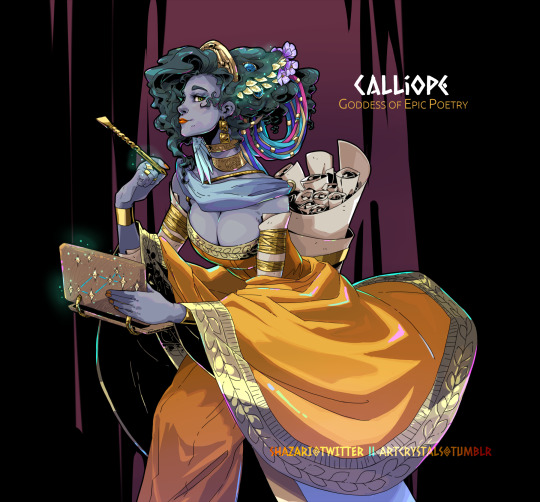
The Nine Muses
Calliope, First of the Muses, Goddess of Epic Poetry
(fan design, ofc)
3K notes
·
View notes
Text
I was searching about the nine muses (greek mythology) on tumblr and i found more posts about 9muses the kpop group and like???? they’re endearing but i wanna see greek mythology posts pls
10 notes
·
View notes
Text
The 10th Muse.
The 10th Muse.
By David Milligan-Croft.
.
A dusting of morning snow,
Covers my car.
I trace a love heart
In the passenger window,
And imagine you smiling
On the other side of the glass.
.
Gia ti dekati mousa mou.

View On WordPress
2 notes
·
View notes
Text
AU where calliope's eight sisters track madoc down and, using their combined powers as muses, infect him with frenzied inspiration in much the way dream did until he frees their sister
#i'm going to eat my own shoes#i need more sister content from the muses#calliope the sandman#the nine muses#the sandman#the sandman alternate universes
5 notes
·
View notes
Text
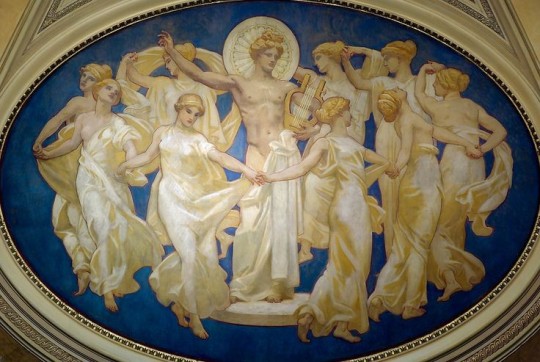
Apollo and the Muses, by John Singer Sargent, 1921, via the Museum of Fine Arts Boston.
#apollo#the muses#greek mythology#john singer sargent#20th century art#mfa boston#calliope#clio#erato#euterpe#melpomene#polyhymnia#terpsichore#thalia#urania#the nine muses#the 9 muses#greek gods#zeus#daughters of zeus#mnemosyne#mount helicon
7 notes
·
View notes